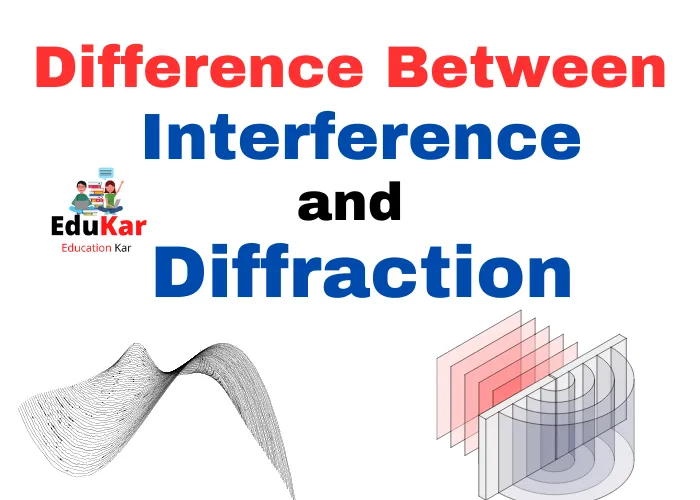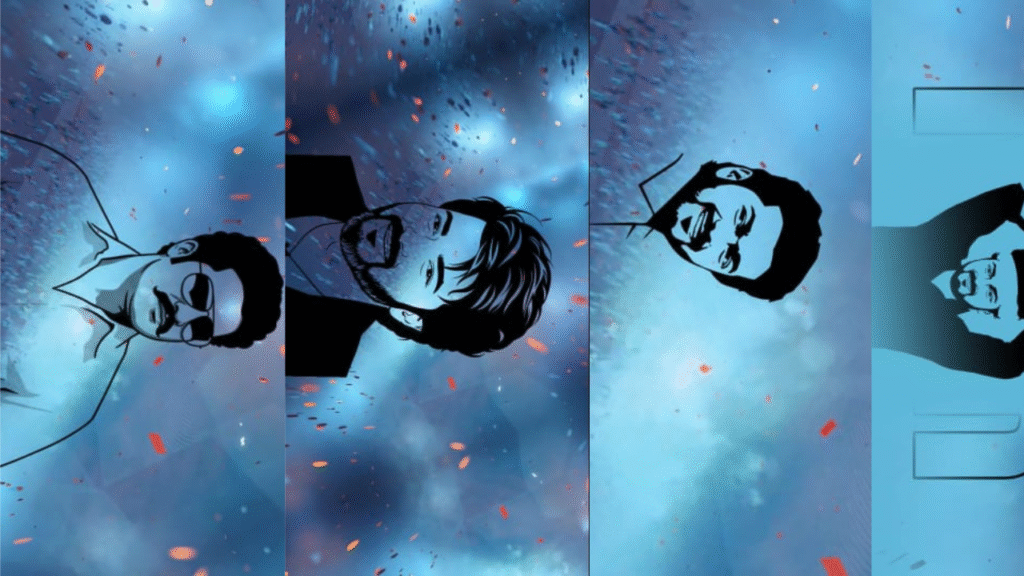This article explains the key differences between interference and diffraction, two fundamental phenomena that occur in waves such as light and sound. Learn about the causes, patterns, conditions, and applications of these phenomena to gain a deeper understanding of their behavior and importance in various fields.
Interference and diffraction are two fundamental phenomena that play a significant role in understanding the behavior of waves, including light and sound. Interference is the process of two or more waves overlapping, while diffraction is the bending of waves around obstacles or through small openings. Although interference and diffraction are related, they have distinct characteristics and applications.
In this blog post, we will explore the difference between interference and diffraction, their properties, and applications.

Interference
Interference is a phenomenon that occurs when two or more waves of the same frequency overlap. This overlapping causes a change in the amplitude of the waves, creating regions of constructive and destructive interference. Constructive interference occurs when the waves’ amplitudes add up to create a wave with a larger amplitude, while destructive interference occurs when the waves’ amplitudes cancel each other out.
One of the most famous examples of interference is the double-slit experiment. In this experiment, a beam of light is passed through two narrow slits close together, creating two coherent sources of light. The light waves that pass through the slits overlap and create an interference pattern on a screen placed behind the slits. The pattern consists of bright and dark fringes, where the bright fringes correspond to constructive interference, and the dark fringes correspond to destructive interference.
The conditions for constructive and destructive interference depend on the phase difference between the waves. If the waves are in phase, meaning that their crests and troughs are aligned, they will add up constructively. If the waves are out of phase, meaning that their crests and troughs are misaligned, they will cancel out destructively.
Interference patterns can be used to measure the properties of light and other waves. For example, the double-slit experiment can be used to measure the wavelength of light. The distance between the slits and the distance between the slits and the screen can be adjusted to produce different interference patterns. By measuring the distance between the fringes on the screen, the wavelength of light can be calculated.
Diffraction
Diffraction is a phenomenon that occurs when waves encounter an obstacle or pass through a small opening. When a wave encounters an obstacle, it can bend around the obstacle and create a diffraction pattern on the other side. When a wave passes through a small opening, it can spread out and create a diffraction pattern.
The diffraction pattern depends on the size of the opening or obstacle relative to the wavelength of the wave. If the opening or obstacle is much larger than the wavelength of the wave, there will be little or no diffraction. If the opening or obstacle is comparable in size to the wavelength of the wave, diffraction will be significant.
One example of diffraction is the bending of light around edges. When light encounters the edge of an object, it can bend around the edge and create a diffraction pattern. This effect is responsible for the fuzzy edges of shadows and the blurring of images produced by lenses.
Diffraction patterns can be used to measure the size of objects and the wavelength of waves. For example, the diffraction pattern produced by a small opening can be used to measure the size of the opening. The distance between the diffraction fringes on a screen behind the opening can be measured, and the size of the opening can be calculated from the diffraction formula.
Differences between Interference and Diffraction
| Interference | Diffraction |
|---|---|
| Definition: Interference is the phenomenon that occurs when two or more waves meet and combine to form a resultant wave. | Definition: Diffraction is the bending of waves around obstacles or through small openings. |
| It is caused by the interaction of waves. | It is caused by the bending of waves around an obstacle or through a small opening. |
| Interference occurs when waves of the same frequency and amplitude meet. | Diffraction can occur with waves of different frequencies and amplitudes. |
| Interference can be constructive or destructive. | Diffraction can also be constructive or destructive. |
| Interference patterns can be observed in both light and sound waves. | Diffraction patterns are observed in light, sound, and water waves. |
| Interference can be used in various applications such as in the creation of holograms, and in radio and television transmissions. | Diffraction is used in applications such as X-ray crystallography, in the study of diffraction gratings, and in the design of acoustic rooms. |
| Interference is more pronounced when the waves are coherent. | Diffraction is more pronounced when the wavelength of the waves is comparable to the size of the opening or obstacle. |
| Interference is observed as bright and dark bands. | Diffraction is observed as bright and dark spots. |
| Interference occurs when the waves are in phase or out of phase. | Diffraction occurs when the waves encounter a barrier or opening. |
| Interference occurs when waves from multiple sources are combined. | Diffraction occurs when waves encounter an obstruction or a slit. |
Conclusion
Interference and diffraction are fundamental phenomena that occur in waves, including light and sound. Interference occurs when waves interact with each other, while diffraction occurs when waves encounter an obstacle or pass through a small opening. Interference patterns consist of bright and dark fringes, while diffraction patterns consist of a central bright spot surrounded by a series of circular or semi-circular fringes.
Whether you’re studying physics, engineering, or another field that involves waves, understanding the difference between interference and diffraction is essential. By mastering these concepts, you can gain a deeper understanding of the behavior of waves and their applications in various fields.
FAQs:
What is interference?
Interference is the phenomenon that occurs when two or more waves of the same frequency overlap, resulting in constructive or destructive interference.
What is diffraction?
Diffraction is the phenomenon that occurs when waves encounter an obstacle or pass through a small opening, resulting in the bending or spreading out of waves.
How are interference and diffraction related?
Interference and diffraction are both fundamental phenomena that occur in waves, including light and sound. While they are related, they have distinct characteristics and applications.
What is the difference between the patterns produced by interference and diffraction?
Interference patterns consist of bright and dark fringes, where the bright fringes correspond to constructive interference and the dark fringes correspond to destructive interference. In contrast, diffraction patterns consist of a central bright spot surrounded by a series of circular or semi-circular fringes.
What are the conditions for interference and diffraction?
The conditions for interference depend on the phase difference between the waves, while the diffraction pattern depends on the size of the opening or obstacle relative to the wavelength of the wave.
What are some examples of interference and diffraction?
One of the most famous examples of interference is the double-slit experiment, where a beam of light is passed through two narrow slits to create an interference pattern on a screen placed behind the slits. One example of diffraction is the bending of light around edges, which is responsible for the fuzzy edges of shadows and the blurring of images produced by lenses.
What are the applications of interference and diffraction?
Interference patterns can be used to measure the properties of waves, such as the wavelength of light, while diffraction patterns can be used to measure the size of objects or the wavelength of waves. They are also used in various fields such as physics, engineering, and chemistry.




